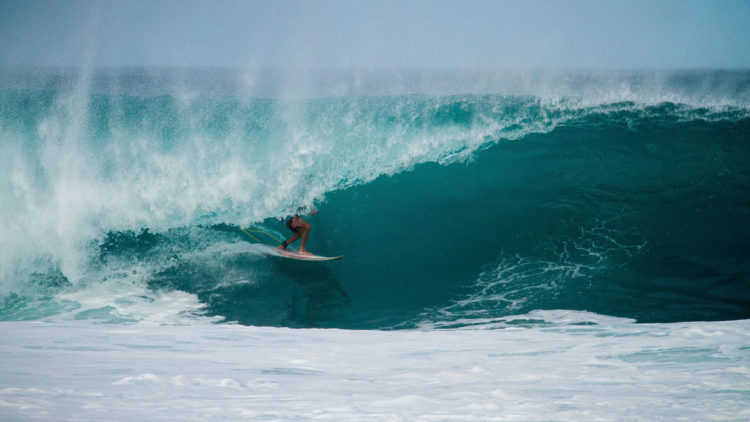Understanding The Tides
These days there are many websites that can give you all the information on the surf forecast, wind direction, swell period etc., but they can't help you with which tide is good for your local surf break. Knowing the tides is really important to help you work out when the optimum time is to go surfing.

Overview On How Tides Work
Tides are mainly caused by the gravitational pull of the Moon and the Sun on the Earths oceans and seas. To complicate things, the earth, sun and moon are constantly moving, which means the tides will be constantly changing also. The good thing about this is that the movement of the moon and sun are predictable, so that means the tides are predictable too.
In general, tides occur two high tides and two low tides each 24 hours. Changing from low to high then high to low every six to seven hours. When it is at the top of the high tide, the water will stop moving and then start decreasing in height, called outgoing or falling tide, until it reaches low tide and the water will stop momentarily again and then start to increase, called incoming or rising tide.
Tidal range is the difference between the high tide and the low tide e.g. high tide is 2.6 metres, low tide is 1.5 metres, then the range is 1.1 metres. The higher the tidal range the stronger the currents will be. So the tides also effect the rip currents, most times getting stronger as the tide moves out.
The water height that the tide charts indicate come from the mean or average low tide height for that area.
Spring tides are when the moon and sun line up, they have a greater pull on the earths waters. At this time we get much higher tides than at other times.
Neap tides are when the moon and sun are at 90 degrees from each other. On neap tides the currents are weaker, as the tidal range is smaller. Neap tides occur on the quarter moon rising or falling.
OK, so what has this got to do with surfing. Every beach is different when it comes to the tides, some beaches work better on low tide, some on high tide and some can be better on mid tide. Getting to know what tides are best for your surf spot is part of surfing.
The tides affect when and where the waves will break. Waves break when the water depth below them is about 1.3 times the wave height; a 6m wave, for example, breaks in 8m of water.
So as the tide gets low the waves break on sand banks that they might not break on at high tide.

Some reefs work better on mid to high tide, as they need more water over the reef, otherwise they can get too shallow.

Most beaches don't work well on extreme low tides or high tides, so for the low tide, it would be better to paddle out about 2 hours after the low tide. Extreme high tides paddle out 2 hours after when the tide starts to fall.
Basically shallow water creates waves that are steep and breaking from the top to the bottom, we also call this a pitching wave. If the wave breaks in a long section and all at once, we call it a closeout wave. Closeout waves have no where for a surfer to go except straight towards the beach. Some also call closeout waves 'dumpers'.

When the water is deep, the waves become more crumbly, full or fat and don't break from top to bottom, but crumble down the face of the wave.

So What Can We Do?
Check your tide charts everyday, and sit and watch your local surf break, so you can understand what effect the different tides have on the waves and which tides are best at your beach. As a surfer you should always be watching the ocean and waves, the more you observe the more you learn, and it's a great relaxing thing to do......sit and watch the ocean 🙂
I keep a copy of the tide charts next to the front door (update: keep a digital copy on your phone), so when I am checking the surf I know if it will get better or worse and when is a good time to throw the board in the car 🙂
Understanding the tides eventually will become second nature and it is one step closer to you becoming an experienced water person.
Next >>> Forecasting Waves
Other FAQsHow to spray paint your surfboard
Where can I find Learn to Surf Books & DVDs?


